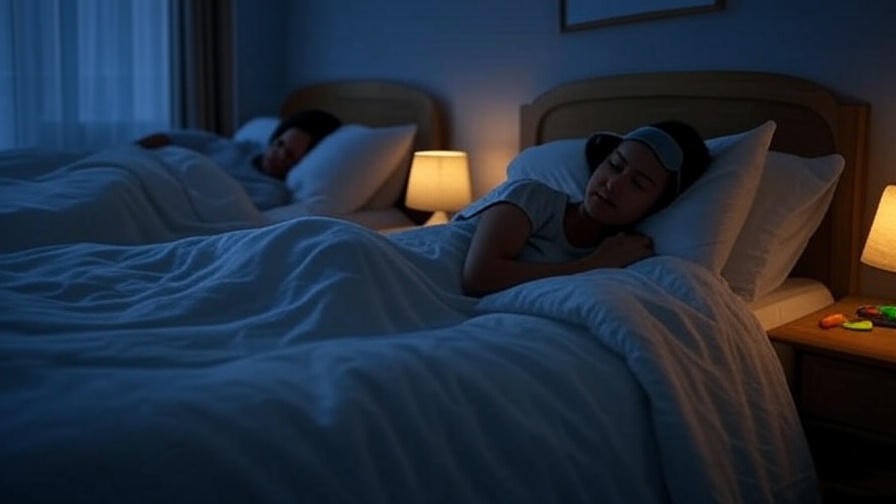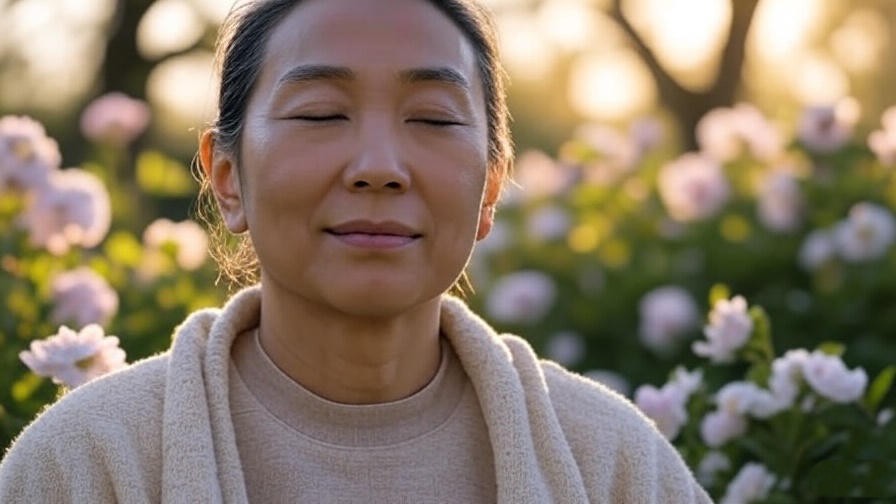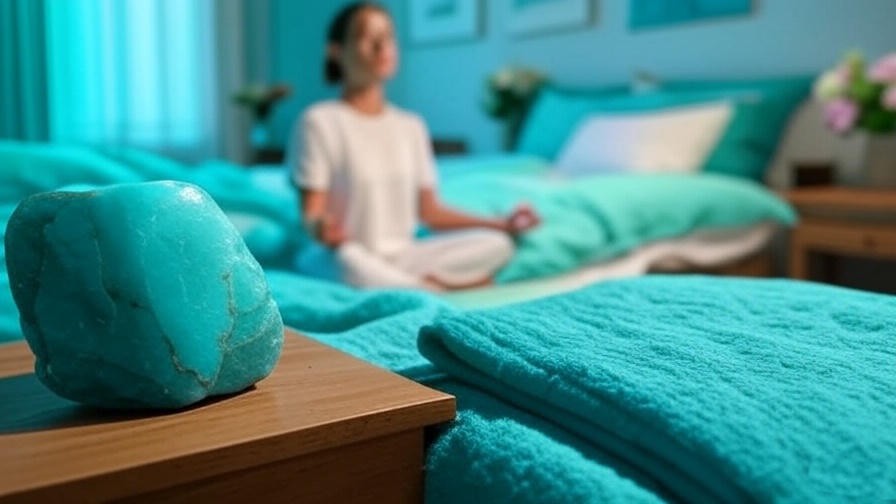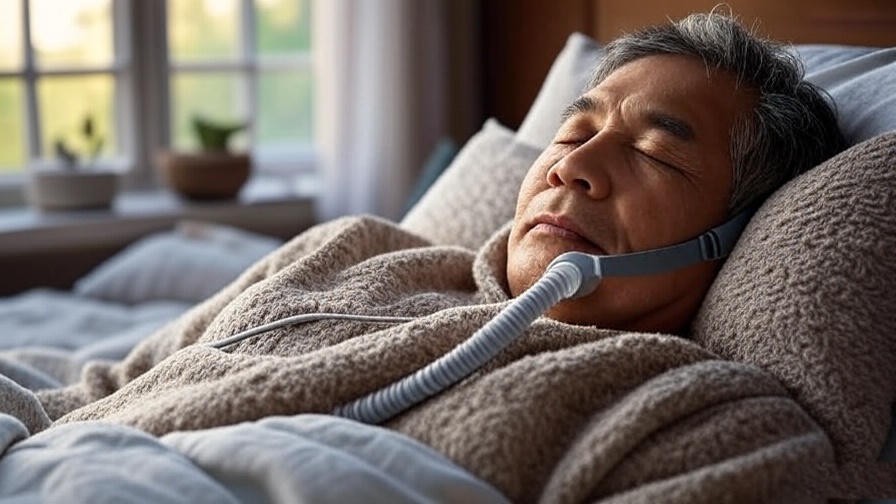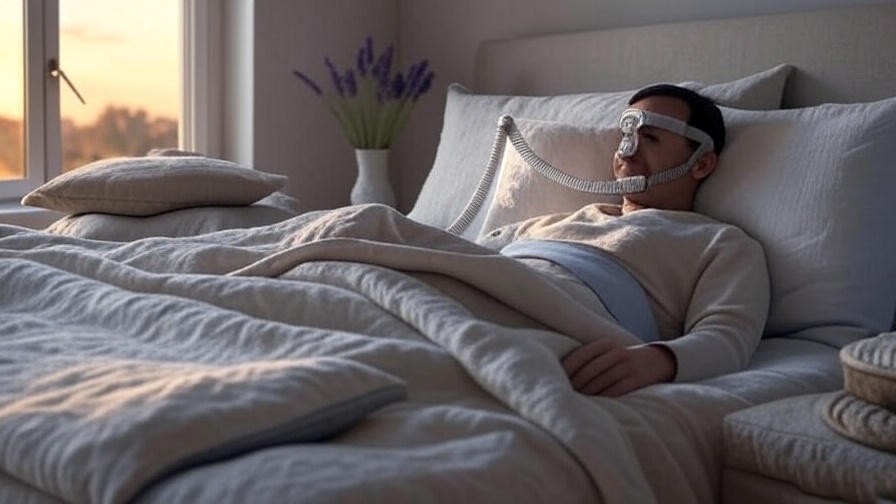Imagine this: you’re on a budget-friendly backpacking trip, checking into a hostel, only to find you’re sharing a room with a complete stranger. Your heart races, your mind spirals with “what-ifs,” and the thought of sleeping peacefully feels impossible. If you’ve ever had to sleep with a stranger—whether in a hostel, shared Airbnb, or unexpected travel scenario—you know the unease that can keep you awake. This situation is more common than you might think, especially for frequent travelers or those in unique living arrangements. The good news? You can stay calm and sleep well, even in these circumstances, with the right strategies.
In this comprehensive guide, we’ll explore science-backed techniques to help you manage anxiety, create a comfortable sleep environment, and rest deeply, no matter who’s in the room. Drawing on insights from sleep science, psychology, and holistic well-being, this article offers practical, actionable advice to transform a stressful experience into a manageable one. Whether you’re a solo traveler, a festival-goer, or someone facing a one-off shared sleeping situation, you’ll find expert tips to ensure restful sleep and wake up refreshed.
Understanding Why Sleeping with a Stranger Feels Uncomfortable
The Psychology of Personal Space and Safety
Sleeping near someone you don’t know can trigger a primal sense of unease. This discomfort stems from evolutionary instincts designed to keep us safe. According to Dr. John Medina, a developmental molecular biologist, our brains are wired to perceive unfamiliar people as potential threats, activating the amygdala—the brain’s fear center. This response is heightened in vulnerable states like sleep, when we’re less able to protect ourselves. The lack of trust and familiarity disrupts our sense of personal space, making relaxation challenging.
Cultural factors also play a role. Personal space norms vary widely, but most people feel a need for physical and emotional boundaries, especially in intimate settings like sleeping. When those boundaries are breached, stress hormones like cortisol spike, making it harder to fall asleep or stay asleep.
How Anxiety Affects Sleep Quality
Anxiety doesn’t just keep you awake—it actively sabotages your sleep quality. When you’re stressed about sleeping near a stranger, your body enters a heightened state of alertness. Cortisol levels rise, suppressing melatonin, the hormone responsible for regulating sleep. Research by Dr. Matthew Walker, author of Why We Sleep, shows that elevated cortisol can reduce REM sleep, leaving you feeling groggy and unrested. Over time, chronic sleep disruption can weaken your immune system, impair cognitive function, and dampen your mood—making it critical to address this challenge head-on.
Preparing Mentally Before the Experience
Reframing the Situation
One of the most powerful tools for staying calm is reframing how you view the situation. Instead of seeing the stranger as a potential threat, try to view them as a neutral presence—someone simply sharing the same space for a short time. Cognitive reframing, a technique rooted in cognitive-behavioral therapy (CBT), helps reduce anxiety by changing negative thought patterns. For example, tell yourself, “This person is likely just as eager to rest as I am.” This simple shift can lower your stress levels and create a sense of shared purpose.
Example Affirmation: Before bed, repeat, “I am safe, calm, and in control of my space.” This affirmation reinforces a sense of security and helps quiet an overactive mind.
Setting Realistic Expectations
Accepting that some discomfort is normal can prevent you from spiraling into anxiety. Sleeping with a stranger may not feel as cozy as your own bed, and that’s okay. Remind yourself that this is a temporary situation, and your body is resilient enough to adapt. Setting realistic expectations—like aiming for restful rather than perfect sleep—reduces self-imposed pressure and allows you to focus on what you can control, like your mindset and environment.
Practical Steps to Create a Safe and Comfortable Sleep Environment
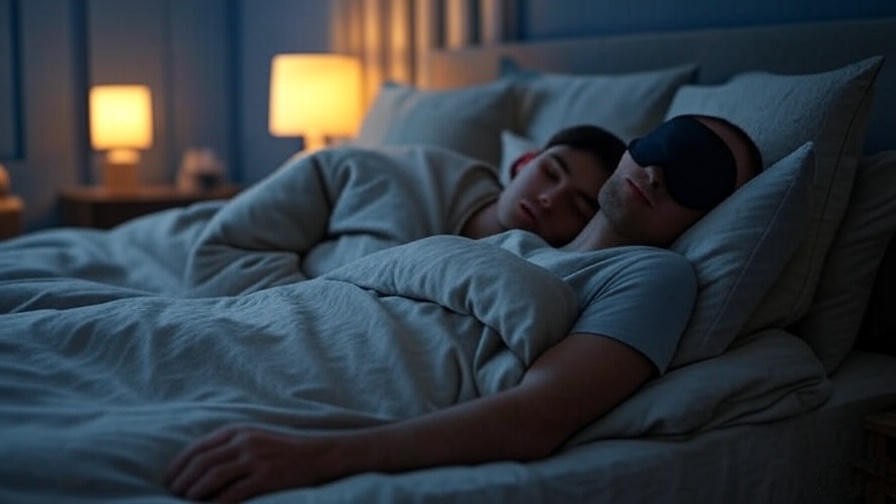
Establishing Boundaries
Clear communication is key to feeling secure in a shared space. If possible, politely express your needs to the stranger. For example, you might say, “I’m hoping to get some rest tonight—would you mind keeping noise to a minimum after 10 PM?” This approach is respectful and sets expectations without confrontation. If direct communication feels awkward, consider non-verbal cues, like wearing earplugs or setting up your sleep area early to signal your intentions.
Example Scenario: In a hostel, you might say, “Hi, I’m [Your Name]. I’m planning to sleep early tonight—cool if we keep the lights low after 9?” This brief interaction humanizes the situation and fosters mutual respect.
Using Physical Barriers
Physical boundaries can significantly reduce discomfort. Portable privacy solutions, like a sleep mask or earplugs, create a psychological and sensory buffer between you and the stranger. A folded blanket or travel pillow can act as a makeshift divider in shared beds or close quarters. For travelers, consider investing in a lightweight sleep sack or portable bed divider for added privacy.
Product Tip: The Macks Ultra Soft Foam Earplugs (available on Amazon) are highly rated for noise reduction, while the Alaska Bear Silk Sleep Mask blocks light effectively without feeling bulky.
Optimizing Your Sleep Setup
Recreating elements of your home sleep environment can signal to your brain that it’s time to rest. Bring a familiar item, like a small pillow or a scented lavender sachet, to anchor you in comfort. Use a white noise app, such as Calm or MyNoise, to drown out unfamiliar sounds like snoring or rustling. According to the National Sleep Foundation, maintaining consistent sleep hygiene—even in unfamiliar settings—helps regulate your circadian rhythm and promotes faster sleep onset.
Tip: Download a white noise track before traveling to avoid relying on Wi-Fi. Sounds like ocean waves or rainfall are particularly soothing for most people.
Relaxation Techniques to Calm Your Mind
Breathing Exercises for Instant Calm
Breathing exercises are a scientifically proven way to reduce anxiety and prepare for sleep. The 4-7-8 breathing technique, developed by Dr. Andrew Weil, is especially effective. Here’s how to do it:
- Inhale through your nose for 4 seconds.
- Hold your breath for 7 seconds.
- Exhale slowly through your mouth for 8 seconds.
- Repeat 4–6 times.
This technique activates the parasympathetic nervous system, slowing your heart rate and calming your mind. A 2018 study in Frontiers in Psychology found that controlled breathing reduces anxiety by lowering cortisol levels, making it ideal for high-stress situations like sleeping near a stranger.
Progressive Muscle Relaxation (PMR)
Progressive Muscle Relaxation (PMR) is another powerful tool to release tension. This technique involves tensing and relaxing each muscle group to promote physical and mental calm. Here’s a quick PMR script for bedtime:
- Lie down comfortably and close your eyes.
- Start with your feet: Tense the muscles for 5 seconds, then release for 10 seconds.
- Move to your calves, thighs, abdomen, arms, shoulders, and face, repeating the tense-and-release cycle.
- Focus on the sensation of relaxation spreading through your body.
Research from the Journal of Clinical Psychology (2019) shows PMR can reduce anxiety and improve sleep quality, even in challenging environments.
Guided Meditation and Visualization
Guided meditation can transport your mind to a peaceful place, even in a shared room. Apps like Headspace or Insight Timer offer short, sleep-focused meditations that are perfect for travel. Alternatively, try this 5-minute visualization:
- Imagine a serene beach at dusk. Picture the soft sound of waves, the warmth of the sand, and a gentle breeze.
- Visualize yourself lying in a cozy hammock, completely safe and relaxed.
- Focus on this scene as you breathe deeply, letting go of external distractions.
Meditation has been shown to reduce activity in the brain’s default mode network, which is linked to overthinking and anxiety, according to a 2020 study in Nature Communications.
Building Trust and Safety in the Moment
Reading the Environment
Feeling safe starts with assessing your surroundings. Before settling in, check the environment for basic safety measures, like secure locks or well-lit common areas. If you’re in a hostel or Airbnb, read recent reviews to gauge the reliability of the accommodation. Trust your instincts—if something feels off, don’t hesitate to speak with staff or seek alternative lodging. Most reputable accommodations prioritize guest safety and will address concerns promptly.
Small Gestures to Build Rapport
A brief, friendly interaction can ease tension and humanize the stranger. Try a simple introduction, like, “Hey, I’m [Your Name]. Just here for a quick stay—hope you have a good night!” This small gesture can reduce the “unknown” factor and create a sense of mutual respect. Avoid oversharing personal details, but a light conversation about travel or the day’s events can set a positive tone.
Example: If you’re sharing a dorm room, ask, “Have you been to [destination] before? Any cool spots you recommend?” This opens the door to connection without being intrusive.
Post-Sleep Reflection and Recovery
Processing the Experience

After sleeping in a shared space, take time to reflect on what worked and what didn’t. Journaling is a powerful tool to process emotions and build resilience for future experiences. Write down how you felt, which strategies helped, and what you might try differently next time. This practice, supported by research in Frontiers in Psychology (2020), can reduce lingering anxiety and improve emotional regulation.
Sample Journal Prompt: “How did I feel before, during, and after sleeping near a stranger? What techniques helped me stay calm, and how can I prepare better next time?”
Restoring Sleep Balance
If your sleep was disrupted, don’t worry—your body is adaptable. To recover, prioritize sleep hygiene in the following days. Stick to a consistent sleep schedule, avoid caffeine late in the day, and limit screen time before bed to boost melatonin production. Strategic napping (20–30 minutes in the early afternoon) can also help without disrupting your circadian rhythm. The American Academy of Sleep Medicine emphasizes that maintaining a regular sleep routine post-disruption helps restore balance and prevents long-term sleep debt.
Tip: If you’re feeling groggy, try a “coffee nap”—drink a small amount of coffee, then nap for 20 minutes. The caffeine kicks in as you wake, boosting alertness.
Special Considerations for Frequent Travelers
Adapting to Repeated Shared Sleeping Scenarios
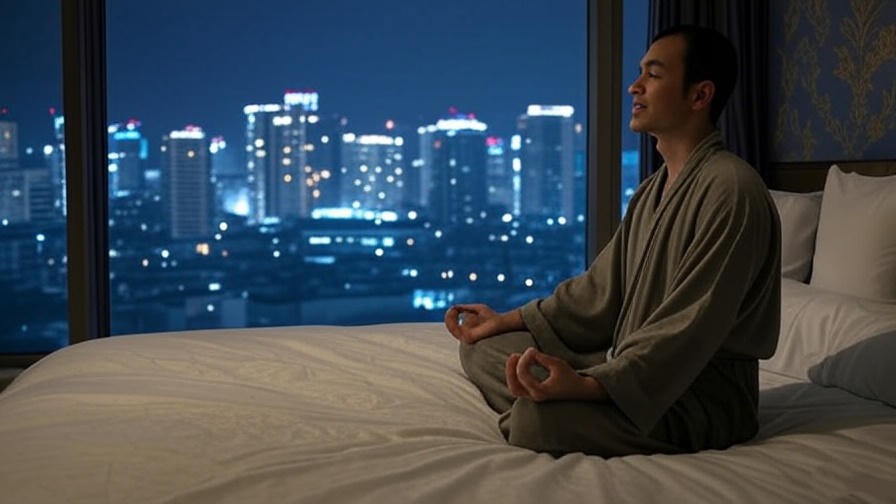
For frequent travelers, like backpackers or digital nomads, sharing sleeping spaces may be a regular occurrence. Building long-term resilience is key. Consider mindfulness training or cognitive-behavioral therapy for insomnia (CBT-I), which has been shown to improve sleep in challenging environments, according to a 2021 study in Sleep Medicine Reviews. Practicing mindfulness daily—even for 10 minutes—can train your brain to stay calm under stress, making shared sleeping situations feel less daunting over time.
Example: Apps like Smiling Mind offer free mindfulness exercises tailored for stress reduction, perfect for travelers on the go.
Packing a Sleep Toolkit
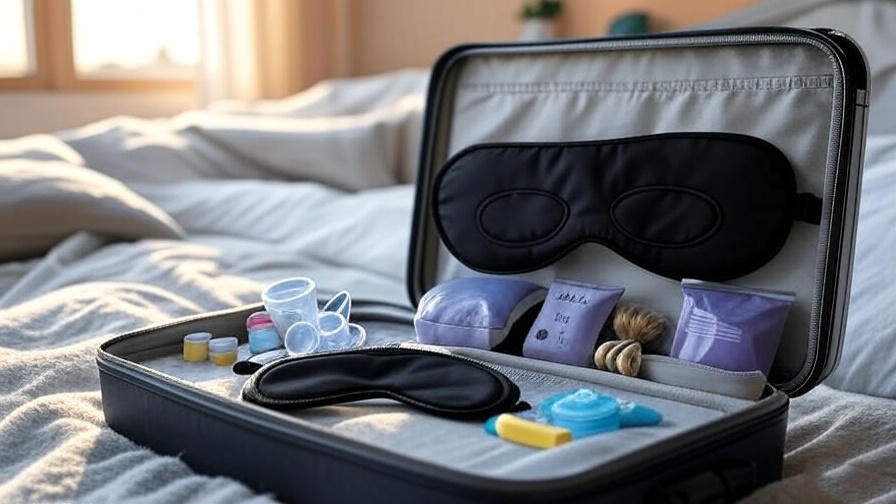
A well-prepared sleep toolkit can make all the difference. Here’s a checklist of essentials for sleeping in shared spaces:
- Earplugs: Block out snoring or background noise.
- Sleep Mask: Ensure darkness, even in brightly lit rooms.
- Travel Pillow: Provide comfort and familiarity.
- Lavender Oil: A small vial for calming aromatherapy.
- White Noise Device: A compact option like the LectroFan Micro2 for portable sound.
- Sleep Sack: A lightweight barrier for added privacy.
Downloadable Resource: Create a printable PDF checklist for readers to pack their sleep toolkit, available via a link on your website. This adds value and encourages engagement.
Expert Insights and Supporting Research
Sleep experts emphasize that preparation and mindset are critical for restful sleep in unfamiliar settings. Dr. Rebecca Robbins, a sleep researcher at Harvard Medical School, notes, “Creating a sense of control in unpredictable environments can significantly improve sleep quality.” Studies from the Journal of Sleep Research (2022) confirm that environmental factors, like noise and light, play a major role in sleep disruption, but proactive measures—like using earplugs or meditation—can mitigate these effects.
Additionally, research from the Sleep Research Society highlights that familiarity cues (e.g., a favorite pillow or scent) can trick the brain into feeling “at home,” promoting faster sleep onset. By combining these insights with practical strategies, you can transform a potentially stressful experience into one where rest is achievable.
Common Myths and Misconceptions
Myth: You Can’t Sleep Well in Unfamiliar Settings
Many believe that sleeping in a new environment, especially with a stranger, guarantees poor rest. However, the human sleep system is highly adaptable. A 2019 study in Nature Human Behaviour found that while the “first-night effect” (poor sleep in new settings) is real, it diminishes with preparation and exposure. Techniques like those outlined above—breathing exercises, PMR, and environmental adjustments—can significantly improve sleep quality.
Myth: Strangers Are Always a Threat
Cognitive biases, like the negativity bias, can make us assume strangers pose a danger. While caution is wise, most people in shared accommodations are simply seeking rest, just like you. Reframing this mindset, as discussed earlier, and taking practical safety steps can help you relax without unnecessary fear.
FAQs
Q: How can I politely set boundaries with a stranger in a shared room?
A: Use clear, respectful communication. For example, say, “I’m hoping to sleep early tonight—would you mind keeping the lights low after 9 PM?” This sets expectations without confrontation.
Q: What if I feel unsafe sleeping near a stranger?
A: Trust your instincts. Check accommodation reviews beforehand, ensure doors lock securely, and contact staff if you feel uneasy. If necessary, seek alternative lodging.
Q: Can meditation really help in high-stress sleep situations?
A: Yes! A 2020 study in Nature Communications found that meditation reduces activity in the brain’s default mode network, calming overthinking and promoting sleep.
Q: What are the best tools for sleeping in shared spaces?
A: Top picks include Macks Ultra Soft Foam Earplugs for noise, Alaska Bear Silk Sleep Mask for light-blocking, and a white noise app like MyNoise for soothing sounds.
Conclusion
Sleeping with a stranger doesn’t have to mean sleepless nights. By preparing mentally, creating a comfortable sleep environment, and using relaxation techniques like breathing exercises or progressive muscle relaxation, you can stay calm and rest well. Whether you’re a frequent traveler or facing a one-off shared sleeping situation, these strategies empower you to take control of your sleep experience. From setting boundaries to packing a sleep toolkit, each step builds confidence and promotes restful sleep.
Try one of the techniques above tonight—perhaps the 4-7-8 breathing exercise or a quick meditation—and share your experience in the comments below. Your journey to better sleep starts with small, intentional steps, even in the most unfamiliar settings.

